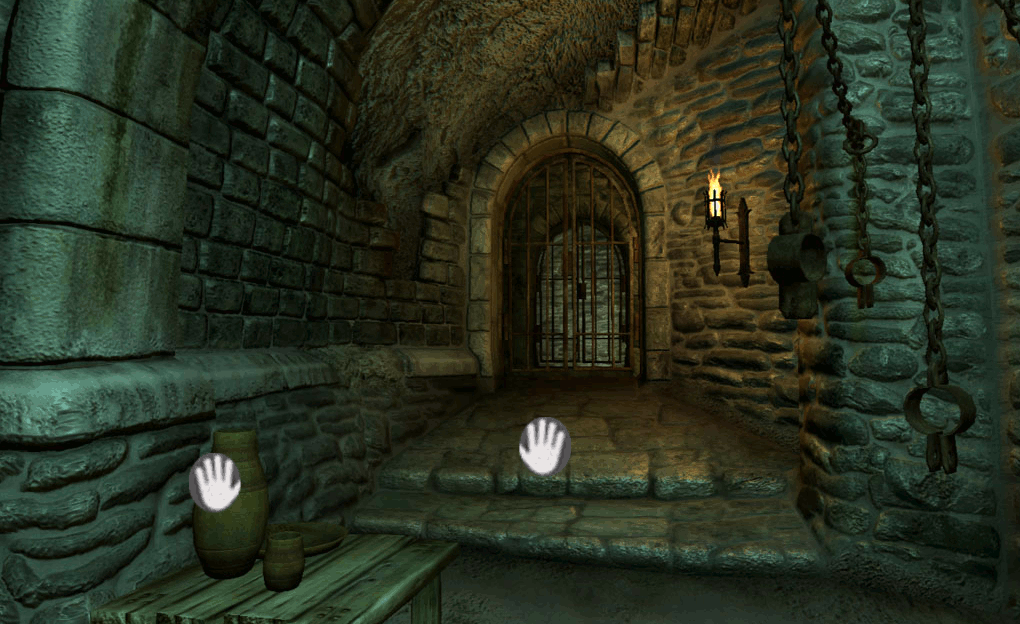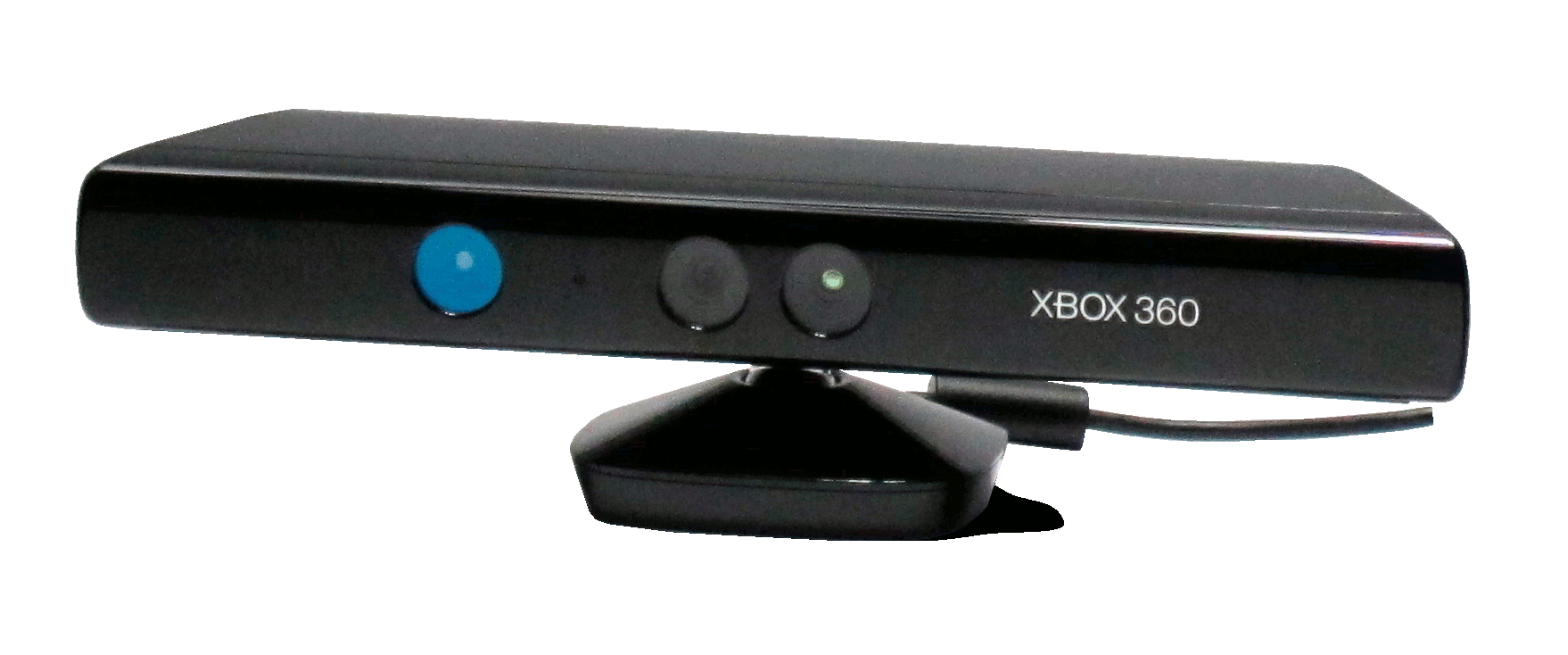Like many gamers, I spent a good part of the past few days playing with Kinect, Microsoft’s new motion control accessory for the Xbox 360. What does this casual-friendly device have to do with a blog focused on role playing games (one of the least casual genres of video games)?
Hopefully, a lot.
I won’t pretend to understand the tech – basically, Kinect uses a combination of camera, infrared projector, and multi-array microphone technology to read and track a user’s skeletal structure, recognize faces, and respond to voice commands, all in real time, without any physical controller. The gameplay applications of this device are demonstrated to a limited extent by Kinect’s launch library – for example, Dance Central can evaluate whether you are properly executing dance moves, and Kinect Adventures (which comes bundled with the device) lets you control all of the limbs (and head) of your on-screen avatar by moving your real-life limbs and head – but overall, the gameplay currently available does not take full advantage of Kinect’s capabilities.
In particular, the potential for an incredibly immersive RPG experience seems glaringly obvious to me. So obvious that I would be surprised if one or more developers were not already hard at work creating one.
Here is the game that I hope someone is making – a Kinect-controlled dungeon crawler in the vein of Ultima Underworld. The game would be played from a first person perspective, with the player-character’s hands visible on screen. To look around, you move your head. To walk or run, you walk or run in place. (To make this less physically taxing, there might be optional voice commands to “walk,” “run,” “stop,” etc.) You jump to jump. You pantomime climbing to climb. You make a motion like you are pulling a sword from an imaginary scabbard at your hip, and your character draws a sword in-game. Move your arms to wield your sword and shield. Use a combination of hand motions and voice commands to cast spells. To access your inventory, reach for your imaginary backpack. You get the idea.
There would be limitations and compromises – for example, creating a game with the scale of Fallout: New Vegas with gesture controls would probably be a disaster. I imagine the game would require a slower pace than most of today’s RPGs, with an emphasis on exploration instead of fighting. To make combat manageable, the game would only throw one or two enemies at you at a time. Also, to play to the strengths of Kinect, a small and contained environment, with lots of objects that you can manipulate, would be ideal – just as it was in Ultima Underworld when that game reached new levels of immersion with the technology of the early 1990s.
Will my imaginary game become a reality? Or will Kinect developers take the lazy route and flood the market with minigame collections that could just as easily have been made for the Nintendo Wii? We will have to wait and see. But don’t write off Microsoft’s “controller-free gaming and entertainment experience” as a casuals-only toy.
Mark my words – Kinect holds a lot more promise for our favorite genre than the Wii (or Sony’s Move) ever did.
Kinect is available as a stand-alone accessory and as part of a 250GB Xbox 360 Bundle
or a 4GB Xbox 360 Bundle
.


Well, just grab a copy of Linux and hack away: http://www.osnews.com/story/24014/Kinect_Already_Hacked_Linux_Driver_Released 😉
If only I had the programming skills….
Thanks for commenting, Licaon!
Yeah, this is probably exciting to many people.
But I’m not a fan of gimmicky games. Guitar Hero, bike racing games where you sit on a plastic motorcycle, Wii remote…
Back when everyone was talking about VR (early 90’s) and all those VR games were available at arcades, I was never interested.
This may be a good thing for games and of interest to some gamers – but a Kinect is something that I don’t ever see myself being interested in or buying.
Being physically active to play a game isn’t for every gamer.
Thanks, Merin. I agree that Kinect, right now, is gimmicky. My hope is that the technology is eventually used to increase immersion in RPGs and other games — only time will tell.
Ever since I heard of the kinetic being launched, I had thought the exact same thing bout an rpg. I love the idea of moving my hands tocast a spell, they should do it.
Thanks, Balor. If done right, casting spells with hand gestures could be really fun. (But if you need to perfectly make complicated gestures, I could imagine it being frustrating as well…)
They are actually are making an rpg for Kinect. It is for the Fable series, it will be called Fable The Journey. I hope it will bring the best out of Kinect. You can use your sword and cast spells in the game.
Awesome idea. I do hope that MS comes out with some form of controller for the kinect. That would make this not only possible but more likely to be complete. The ability to move by using a joystick is just too much better than walking in place :(. The ideal solution would be the Sony Move and Kinect to create a fully immersive experience. But it could definitely be the finest RPG to ever exist.
I agree, Joe. At some point MS will need to introduce some sort of controller, even if it is just a stick with one button. Right now, for example, they really can’t offer a shooting game because there is no trigger.
I really hope someone takes this idea and runs with it.. i’ve been a long time Morrowind fan and would love to see an RPG along those lines too. As a girl gamer, i’m always looking for more entertaining means of working out rather than the boring fitness ‘exercise games’. I liked your suggestion of having voice commands (or perhaps and auto walk setting for those who don’t care to) it would be awesome to have a great storyline, scenery and quests with the side benefit of burning calories from all that walking and fighting!
Sounds great to me. Dance Central is fun, but killing skeletons would be a much more original workout! Thanks for posting, SK.
I agree completely with SK – I don’t want a work out game – I want a game that’s entertaining and interesting and lets me get a work out in while I’m at it. And it’s interested that I’m a woman, also – are we the only ones looking for double duty out of our RPGs?
I also just picked up a Kinect system last night and I can see the possibilities.
I am dreaming of a game like you suggested since Kinect was launched and i was dissapointed that they stick to the boring minigames for now. So i totally agree that they should put their efforts in creating an imersive rpg game. WoW alike with Kinect controls. Heck even in 3D mode for people who have 3D television now !!! Welcome to the future !!
How bout a ring mouse? Non invasive, possible 3 buttons. I vote nevetwinter nights as the rpg. Great game, wonky cntrls.
We bought a kinetic on Wednesday dec. 22ond. We live in an apt. n we have 3 table top lamps. 2 at the end of my couch & 1 about 3 feet from the tv. DID ANYONE EVER HAVE ANY TROUBLE WITH THE FACE EITHER BEING OBSCURED , NOT ENOUGH LIGHT OR NOT CLEAR. EVEN THOUGH THE SETTINGS SAID EVERYTHING IS OK GO AHEAD N PLAY.
Check this one:
Fable the Journey
http://123kinect.com/game/fable-the-journey/
=)))
Hope it will be released soon!
Mass Effect 3 will be voice activated also.
Ever since we got the Kinect at my house I’ve been craving a game like the one you described…I want less fitness and dancing/sport games, and more adventure/rpg stuff. It would be so awesome to explore a full rpg world with those controls you described. Wake up game developers!!